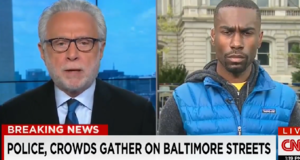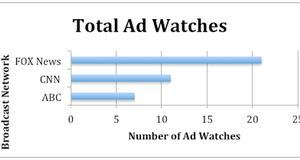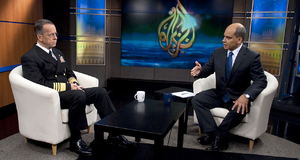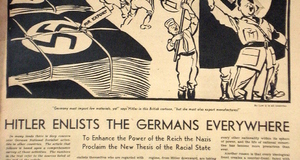From Elon Journal of Undergraduate Research in Communications VOL. 4 NO. 2Public Perceptions of Media Bias: A Meta-Analysis of American Media Outlets During the 2012 Presidential Election
IN THIS ARTICLE
KEYWORDS
AbstractThere has been a considerable surge of scholastic inquiry in recent years into understanding the factors responsible for the fluctuating levels of public trust in the American news media. With every election year, the American public continues to perpetuate the stereotype that the American news media is ideologically biased, negatively shaping other citizens' views of the American political system and impacting their willingness to participate in the electoral process. This study asserts that the likely factors contributing to public perception of a liberal media bias are indicative of the ideological preferences of partisan individuals and customers, rather than any blatant compromises of professional integrity by American journalists. Furthermore, supported by a selection of existing media bias literature and a multi-tiered meta-analysis of 2012 electoral coverage patterns, this study found strong evidence to suggest an overwhelming conservative media bias within the 2012 election coverage by American media outlets. Public opinion is formed and expressed by machinery. The newspapers do an immense amount of thinking for the average man and woman. In fact, they supply them with such a continuous stream of standardized opinion, borne along upon an equally inexhaustible flood of news and sensation, collected from every part of the world every hour of the day, that there is neither the need nor the leisure for personal reflection. All this is but part of a tremendous educating process. It is an education at once universal and superficial. It produces enormous numbers of standardized citizens, all equipped with regulation opinions, prejudices and sentiments, according to their class or party. (Winston S. Churchill, Mass Effects on Modern Men, 1925) I. IntroductionFor over 30 years, there has been intense discussion and scholastic inquiry into the subject of media bias in the American media. Americans are repeatedly exposed to accusations that the mainstream media are inherently biased through their daily coverage of social, political and economic news to the American populace. Politicians from both sides of the spectrum have howled that an overwhelming majority of American mainstream media outlets, including CBS, NBC and CNN, and three major U.S. print outlets, the Los Angeles Times, the New York Times and the Washington Post, routinely compromise their journalistic respectability through obvious liberal slants found in their reporting. The subject of this blatant media bias, more commonly referred to as the "liberal media bias," has become a central theme of political maneuvering since the 1980s, penetrating numerous socioeconomic and ideological demographics within our society, now arguably equated to the level of cultural gospel. Conservatives in particular often claim that media gatekeepers intentionally shut out conservative ideas and have an ingrained slant toward liberal perspectives, particularly within the context of presidential and legislative election years. People are perpetually exposed to information about our world by America's mainstream news media. While the information itself routinely reshapes our opinions about the world in which we live, consumers also routinely develop attitudes toward the media outlets themselves during the process of consuming news. This paper will attempt to provide insight into the underlying societal factors that are responsible for the continued cultivation of the "liberal media bias" theory. The author will place particular emphasis on the role of consumer attitudes, which stand to affect public perception of the American media's impartiality during the 2012 election. Extant Theories of Media BiasResearchers have attempted to examine the circumstances under which a "biased media" could logically exist in equilibrium, and what effects an inherent bias might have on public opinion in general, as well as the outcome of our nation's electoral process. Previous empirical articles on the existence and effects of media bias suggest the presence of a palpable media bias. However, it is the assertion of this research that an individual whose ideological belief system is comprised of more extreme political views and who self-identifies as politically active will perceive media bias more often, no matter which end of the spectrum the bias is perceived to occur. Existing research highlights three commonly referenced explanations as to how and why bias perceptions emerge. Excessive exposure to messages enforcing the validity of bias can create a false impression of a perceptible level of bias in the media. Unfortunately, this explanation neglects the distinction between the information itself and the media outlet publicizing it. A second explanation concerns the extent to which measurable media bias exists. Previous studies suggest that claims of partisan biases in the media are unsubstantiated, and that media coverage is predominantly fair and unbiased. The third and final explanation for bias perceptions, referred to in academic circles as the "hostile media phenomenon," postulates that people who are highly involved politically, often referred to as partisans, will perceive media content as "hostile" and biased if it is incongruous with their personal ideological viewpoint. Model Timeframe Selection (2012 Presidential Election)Mainstream media outlets in the United States have long been subjected to waves of criticisms and accusations pertaining to the existence of a blatant liberal media bias. But perhaps the debate surrounding media partiality has never been more widely discussed or applicable than within the context of the recent 2012 presidential election. Citizens from every corner of the American political spectrum openly chastised American media outlets for vilifying the 2012 Republican candidates whilst forsaking their commitment to objectivity to coincide with their (supposed) private "pro-Bama" agendas. In a press release drafted September 25, 2012, Brent Bozell, president and founder of the Media Research Center, a conservative media watchdog group, openly lambasted the (supposedly) corrupt American media in an open letter, asserting that the establishment media are "out of control with a deliberate and unmistakable leftist agenda"(Bozell, 2012), whilst urging discerning Americans to switch off the "biased news media." The letter reads: "In the quarter century since the Media Research Center was established to document liberal media bias, there has never been a more brazen and complete attempt by the liberal so-called 'news' media to decide the outcome of an election," wrote Bozell. He went on to present a litany of grievances on behalf of "millions of Americans" against the news media, some of the highlights of which include; "shamefully smearing" Mitt Romney over the course of the election; downplaying the "horrendous economic conditions" within the country; "pouncing" on missteps by conservatives while "suppressing" gaffes by Vice President (Joe) Biden; and "deliberately covering up embarrassing government failures and scandals, including the Solyndra debacle, Fast & Furious, and national security leaks"(Bozell, 2012). And while some of the sentiments presented in the letter as can be dismissed as sensationalist in nature, a number of important questions remain: What is the media's responsibility with neutral, objective reporting? Which type of news outlet best serves the concerns of our democracy: an outlet which claims to uphold the tenets of "fair and balanced" reporting, yet is unmistakably aligned with a partisan ideology, or an outlet which makes claim to neither neutrality or bias? Furthermore, to what affect does bias (if existent) impact the coverage patterns of a general election by the mainstream media, as well as its subsequent outcome? (For future reference, the term "general" election refers to the period of time between the two major parties' nominating conventions and Election Day.) Due to the prevalence of highly contentious ideological battles that dominated American airwaves and headlines from April to November 2012, it seemed entirely appropriate to select the 2012 presidential election as the dedicated analysis period within the context of this study. Through analysis of the pre-dominant political, social and economic issues and the media's subsequent coverage patterns of those issues, this author hopes to further the reader's understanding of the phenomena that drives public perception of the liberal media bias.Continued on Next Page » Suggested Reading from Inquiries Journal
Inquiries Journal provides undergraduate and graduate students around the world a platform for the wide dissemination of academic work over a range of core disciplines. Representing the work of students from hundreds of institutions around the globe, Inquiries Journal's large database of academic articles is completely free. Learn more | Blog | Submit Latest in Business & Communications |



















